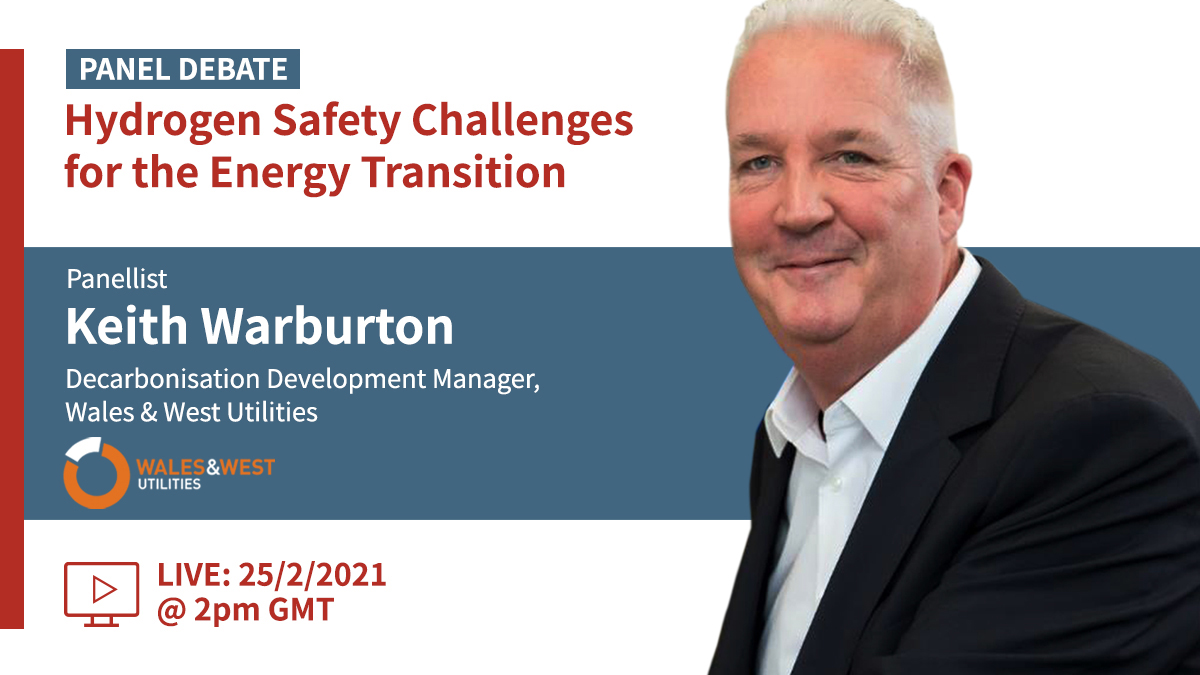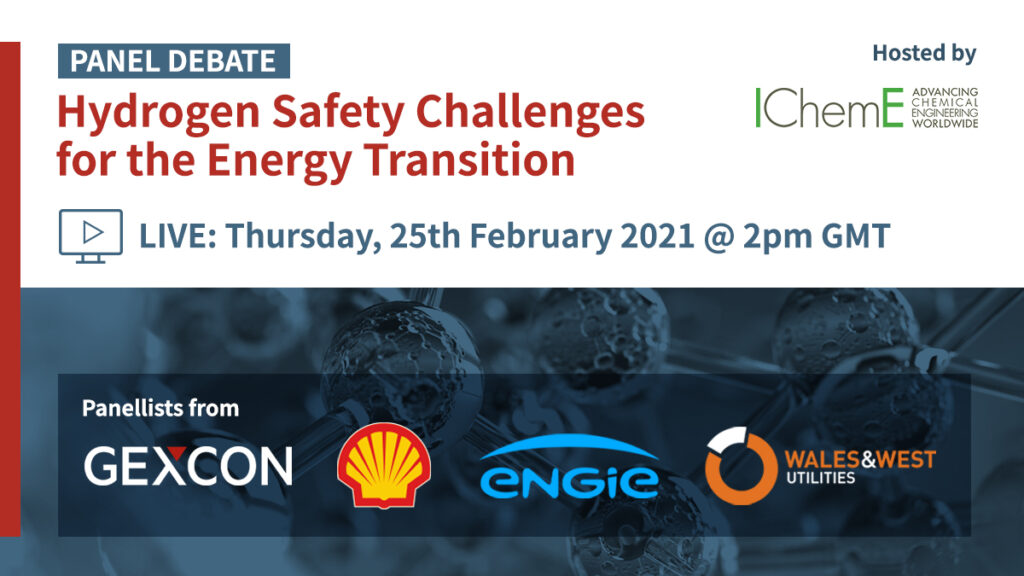
Safety standards exist to protect and provide assurance to businesses, their employees and customers, and the environment. They help employers and employees establish a safe, compliant and healthy workplace and producing products/ services that are safe for the customers. This applies to every industry, including industries working with hazardous/ flammable materials, such as hydrogen.
As a part of the “Hydrogen Safety Challenges for the Energy Transition” Panel Debate, we are interviewing the panelists to know their thoughts on hydrogen safety challenges before the event.
Keith has significant management and technical experience in delivering complex infrastructure projects and the experience in working with standards and regulations. He is the lead for Wales and West Utilities on HyTechical, responsible for reviewing and updating the Institution of Gas Engineers and Managers (IGEM) technical natural gas standards to accommodate Hydrogen and Hydrogen blends, i.e., IGEM/TD/1, TD/3, TD/4, TD/13 and SR/25. Keith is also a member of the H21 Steering Group (Northern Gas Networks), the Government Department for Business, Energy & Industrial Strategy (BEIS) workstreams comprising the Network Safety & Impacts Board and the Integrated Hydrogen Trials Board.
In this interview, Keith explains his perspectives on issues related to standards for hydrogen industry based on his experience within HyTechnical Program in the UK.
Q: To fully deploy hydrogen as energy, aspects supporting its safety must be in place, including standards. Are there any standards in the UK that we are missing for this to happen?
Yes, there are. It is more fundamental than just standards.
In general, legislation is required to produce a comprehensive top-down safe process within industries. It drives every aspect in the document hierarchy pyramid, including safety cases, policies, standards and engineering procedures, companies’ procedures, temporary engineering instructions, risk assessment and training.
In the UK, we’re not in that position at the moment for hydrogen. The default legislation for hydrogen safety falls under a broader umbrella: The Health and Safety at Work Act 1974.
The work that is progressing is based on the production of a Quantitative Risk Assessment (QRA) for both upstream and downstream of the emergency control valve. The standards are being revised to reflect the work within that scope to address hydrogen-specific supplements to existing IGEM gas standards.
Current hydrogen projects in the UK must comply with the existing legislation that applies to gasses generally. Hydrogen falls under the definition of “gas” in The Gas Act; hence the primary legislation for hydrogen projects at the moment is The Gas Act. Meanwhile, the secondary legislation is split around the emergency control valve. The upstream of the emergency control valve is The Gas Safety (Management) Regulations 1996 and the downstream of the emergency control valve is The Gas Safety (Installation and Use) Regulations 1998, Pressure System Safety Regulations 2000, Dangerous Substance and Explosive Atmospheres Regulations 2002 and Pipeline Safety Regulations 1996, etc.
Q: Based on your experience, can you briefly describe the hurdles you face in developing safety standards for hydrogen application as an energy vector?
Keith: I think there are no issues in terms of developing standards for the hydrogen industry. The development of hydrogen-specific supplements to the Natural Gas Standards, for example, IGEM/TD/1, TD/3, TD4, TD/13 and SR/25, will work as an interim solution until we are in a position to respond and produce a top-down and fully comprehensive hydrogen specific process driven by legislation.
Q: How do you see Wales & West Utilities’ role related to hydrogen industry standards as we advance?
Keith: Our role is primarily to support and bring the expertise to develop standards that will meet the hydrogen industry’s safety requirements, including the initial setup in QRAs and underpin the safe introduction and utilization of hydrogen (either blended or 100%).
The UK Gas industry, Government (BEIS) and Regulators (HSE & Ofgem) have undertaken an extensive program of work to look at hydrogen hazards and the effects on our existing network assets and whether we can repurpose them. This program also touches on the societal aspect, which is the public perception of hydrogen.
Together with other gas distribution companies, the Health and Safety Executive, and Ofgem, we are engaged in moving this working program forward to determine the specific hydrogen safety requirements and demonstrate that hydrogen will be as safe as natural gas.

A more detailed discussion between Keith and the other experts from Gexcon, Shell, and Engie was presented in the “Hydrogen Safety Challenges for the Energy Transition” Panel Debate. To request a replay, please click on the button below.
Do you like what you read?
Get the latest trends in the field of process safety management straight to your inbox, and enhance your skills through knowledge sharing from industry experts.


